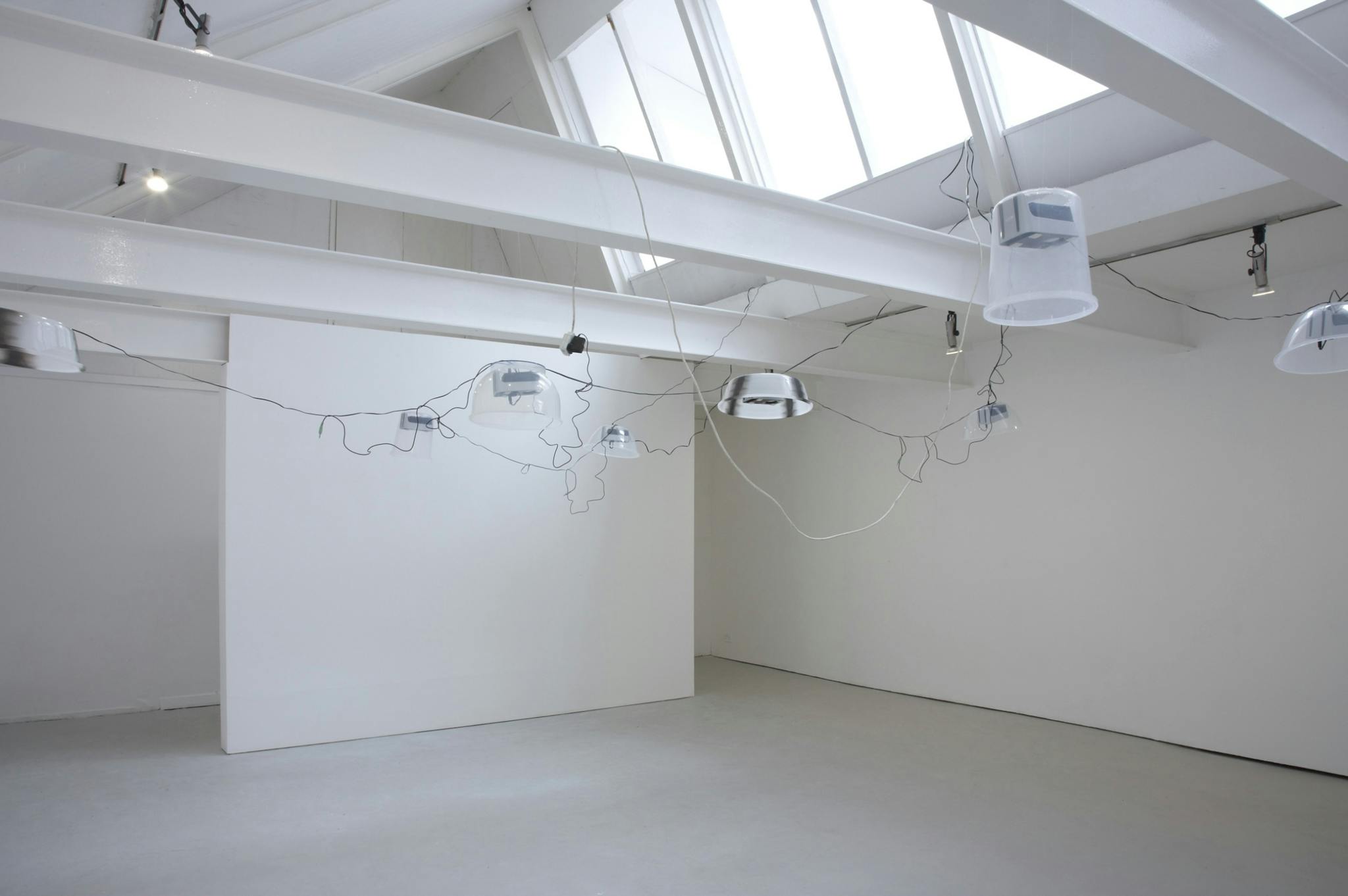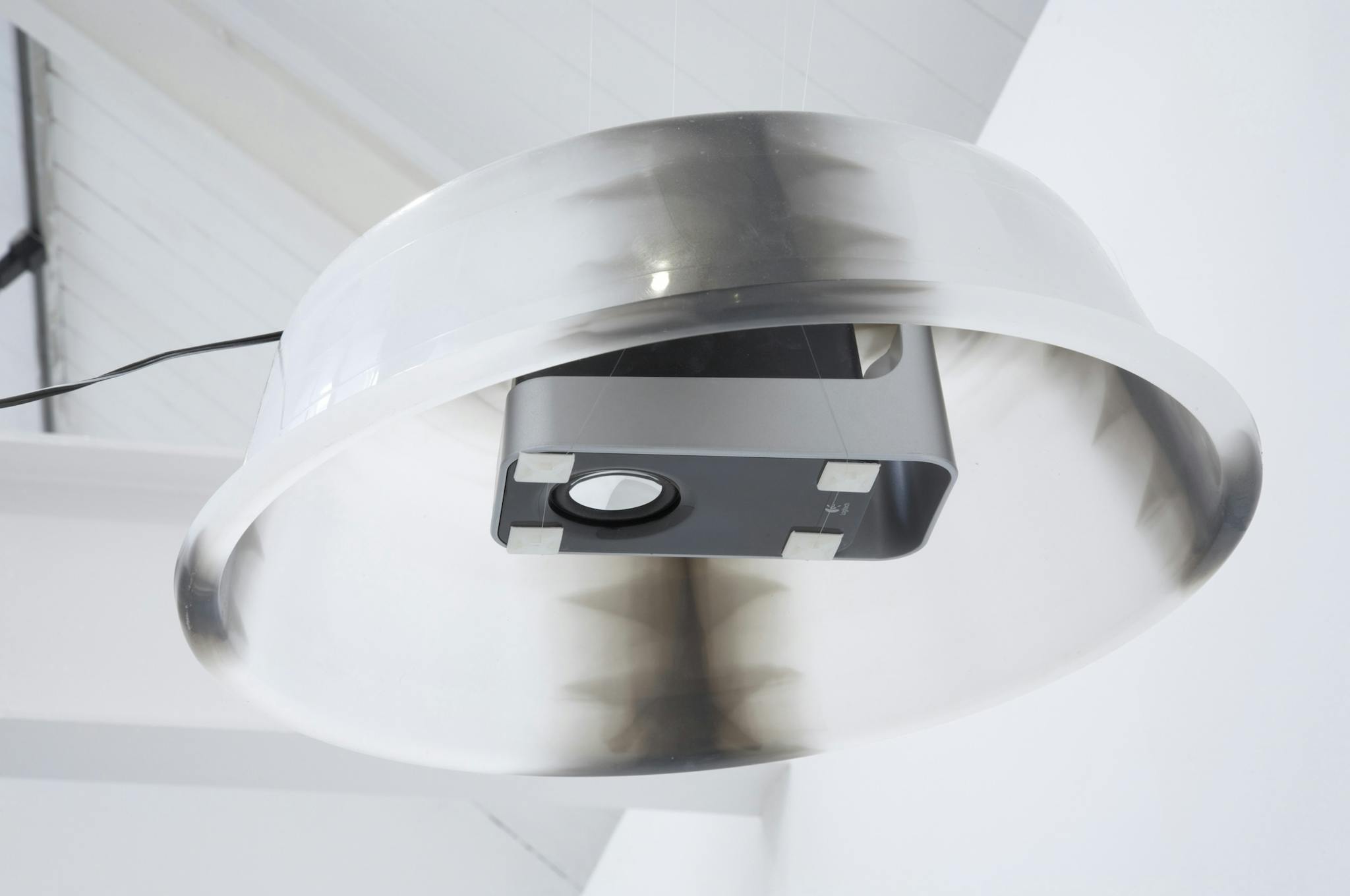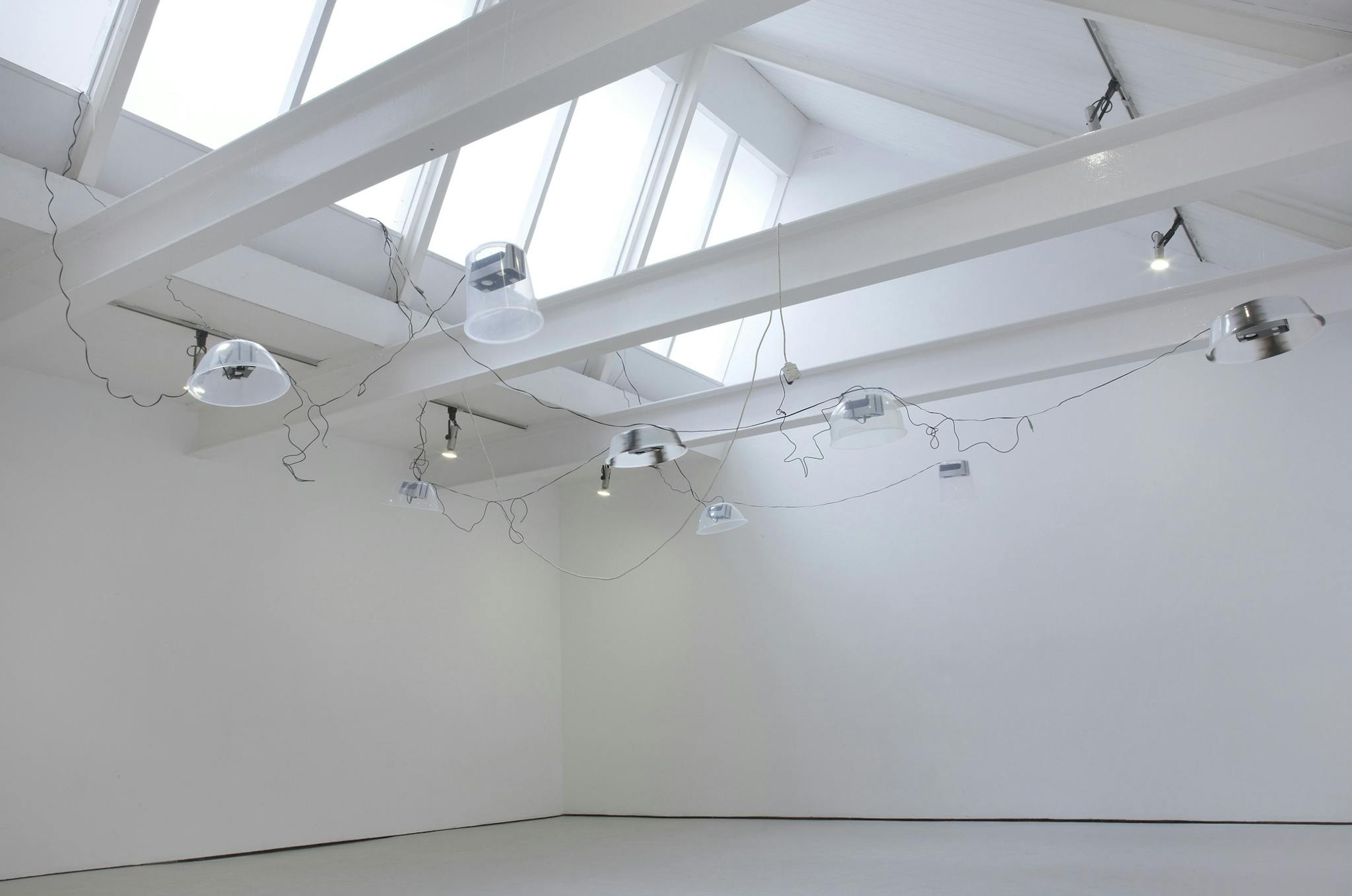
Morag Keil
Civil War
2012
8 channel sound installation, computer speakers, plastic bowls and cords
Dimensions variable

Morag Keil
Detail: Civil War
2012
8 channel sound installation, computer speakers, plastic bowls and cords
Dimensions variable

Morag Keil
Civil War
2012
8 channel sound installation, computer speakers, plastic bowls and cords
Dimensions variable
OUTPOST Gallery presents Civil War, a new body of work by the Scottish born artist Morag Keil.
The majority of the gallery is taken over by a sound installation comprising a collection of recordings. Here, four individual audio tracks play on repeat in the gallery space. Each recording is distinct, and has been separated into left and right speakers to create eight individual channels of sound.
Incorporating the architectural features of the gallery, each of the eight speakers hangs above head height from one of four horizontal metal girders. They are suspended inside domes that direct these sounds into a human sized zone, allowing the viewer to tune into individual tracks by standing below these makeshift devices.
A variety of actions are captured in these audio tracks, from ripped recordings of online video soundtracks, including the arcade game Tekken, to promotional digital trailers for rollercoaster’s. Others are field recordings made by the artist in commercial banks in Norwich city centre, in addition to street noise in London. Interspersed with these are the foreign sounds of French online adverts, which appear before a main video on streaming websites.
A partition wall intersects one end of the gallery to create a confined space inside which this sound installation continually resonates. Elsewhere in the exhibition hangs a large print work of the artist's breasts, impressions produced by hand onto brightly coloured paper.
-
A conversation between Alex Waters and Morag Keil
AW: In our previous conversations concerning this work you have spoken about the zoning of sound, for example, in shopping malls where this is engineered in a highly controlled specific way. How has your interest in this become incorporated into this work?
MK: Its a mixture of things, one is the supermarket/mall/street thing - so the sound is determining the use of the space - chill out music in the café area and fast music in a sports store etc. But then coming from the use of space is a kind of zoning. So you could create a zone inside a space. Like teenagers getting dressed on the tube or office workers changing shoes, the public space becomes their zone and the use is changed. I wanted to try and make sound zones in the gallery.
AW: There seems to be two distinctly different modes of sound in the installation. Firstly the capturing and transporting of an environmental or textural recording (e.g. the rollercoaster recording), and then what appear to be more intentionally edited and perhaps more loaded tracks such as the edits from Tekken.
MK: The whole idea came from the Tekken videos; that was when I first separated the sound from the video. I picked it specifically for the dramatic versions of masculinity and femininity (Bryan Fury and Lili) - the digital cartoonified noise of a man beating a woman would be a competitive game, entertainment. So I wanted to take the vitural and make it 3D, an experience in space. That was when I decided to also take the sound of the rollercoaster, a pure entertainment experience. But as these sounds already had ups and downs, I didn’t need to construct and edit them as much to make an experience. Then the Rye Lane was meant to be a break, its the only track that is ripped from real experience, the rest are all taken from online videos. I put the ads into Rye Lane to enter reality into the digital, the experience of pop up ads.
AW: In our general conversations you are often concerned with political ideas such as disparity of pay, working conditions, unionism etc, but the political element of the work seems quite understated, far more subtle and possibly a politics quite different from those of practical existence. How do you reconcile, (or do you feel you need to), these political concerns and your practice as an artist?
MK: I guess OUTPOST was the politics, exhibiting in OUTPOST is a reaction to the structures that exist. Whether you like it or not, OUTPOST has a political position, being an artist run space where no one is paid etc. I had made shows that took a stance against the situations they were in. I found that could be negative, for a work to be determined by the things I disagree with. Not that I see being anti as negative, of course not, but I wanted to make a positive show and OUTPOST was a situation that I agreed with and it felt more like working with, rather than against.
AW: Returning to the theme of juxtaposition and contrast. The Breast prints appear to be an entirely separate work to the sound installation; a far more personal, performative activity, actively referencing the history of grass-roots feminism in the art of the recent past. Could you talk a little about how the prints fit in (or don’t fit in) to the exhibition as a whole?
MK: I wanted to do breast printing for a while and when you asked about making the edition I thought it would be perfect, so I did them but then decided they should be in the show as a work not an edition. It was again part of the positive ideas, bright colours, freedom, liberation, breasts. But also they bring the body in to the show so you see the breast and then what is behind is the insides, the mechanics, soft machine.